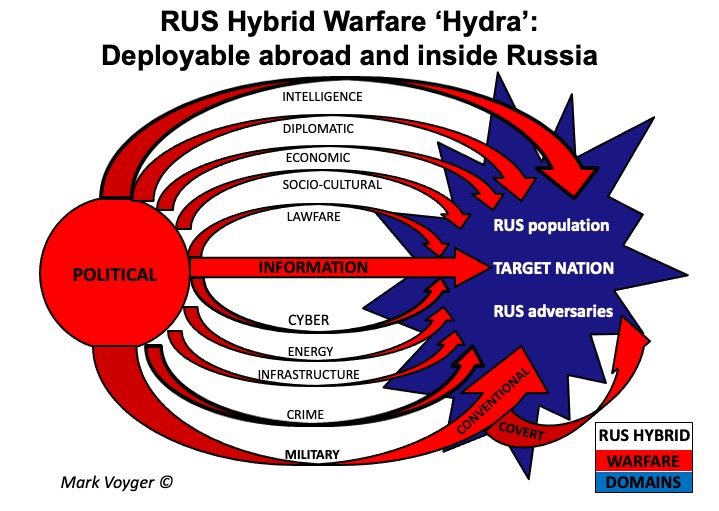I remember this simple map that someone made to showcase the war in Ukraine. It is commendable as it supports Ukraine, however this is oversimplification of how borders and identities in Europe work.
However why Americans tend to think in such a simplistic way, while Europeans do not.
European Identities and Races Are Diffused
I made a separate more detailed article about difference in how identity works in Europe and North America. Here is the key extract:
Unlike Americans who not only think but also divide themselves with strict boundaries. European divisions are much more diffused.
There may be firm lines that demarcate boundaries between nations. However, when it comes to actual identities and characteristics of the people, it is much more nuanced.
While people in national centers are close to pure representation of culture and identity of the said nation, people who live in the border areas are much less so. In many cases border people have a lot more in common with people across the border than with those in the national center.
Southern French has a lot in common with Catalonians in Spain or Lombardians in Italy. Back in the days they even spoke a language that is similar to Catalan.
In contrast north Italians are rather different from those who live in the south.
Of course, there are exceptions to this rule. In some places boundaries are very clear.
However overall Europe is much more diffused compared to the US.
Americas is like color wheel:
Europe is like gradient:
There are some areas of concentration of one particular color and a lot of diffusion as one color gradually morphs into another.
How that leads to arguments over borders
Because European identities are so diffused, but national boundaries have to be clearly demarcated, arguments over where the border should be can arise.
There were plenty of such arguments in history and many more still exist in many places in Europe.
In many places no matter where you draw the line, someone will be unhappy.
Some towns and cities have mixed ethnicity and culture population. When line had to be drawn, it divided the city against itself.
Disputed Areas
Even areas that have been in the same nation for more than 100 years, have some people who are more loyal to the previous holder.
For example, Alsace-Lorraine was in France from the end of WWI. However, it was German until then.
Germany in turn got it from France only in 1871, so France could argue they were taking back what was rightfully theirs in WWI.
However, Germany could also argue that it was German back before 17th century. so, they were only returning what was rightfully theirs.
People in actual area is divided between whether they want to be in Germany or in France.
Nowadays France allows use of German language in this area (Alsace part of it to be precise), making area effectively bi-lingual.
Germany in turn allows French language in neighboring Saar.
History of Struggle for control over territory
Alsace-Lorraine is one of many examples of territorial disputes in Europe. There are many others. Such as Silesia, Kosova, Transylvania, Bessarabia, Skane, Schleswig-Holstein, Roussillon, Trent, Kresy, Crimea, Donbas, Smolensk, Ingria
In contrast in Europe a lot of such disputed land would be fought over in a war and then was simply taken by force by the winner.
Such method of solving territorial disputes of course lead to bitterness, resentment and revanchism. The losing party continues to claim the land and will simply try to take it back/again in the next war.
Most of European land Changed Hands Multiple Times
I would say that most areas of Europe used to belong to a different country over the course of history. There are but few pieces of land that was always in the same hands.
Possibly only core of Sweden (with exception of Skane), Denmark (with exception of north Schleswig), most of Branderburg lander of Germany and northern parts of Spain were always parts of the same country. Also, Paris and surrounding areas were occupied by Germans a number of times but was never annexed into any other nation. Also, Frech appanages do blur the line between foreign and local rule.
The rest of European land kept changing hands. Even such huge nations, such as Poland were once erased from the map completely only to return to it after 123 years of absence.
In contrast in the US, most areas were always parts of the same state. This provided their people with a sense of continuity and permanence.
The only exceptions are West Virgina, that was part of Virginia before becoming its own state, areas ceded from Texas, as well as Maine, Connecticut and Rhode Island, that used to be part of the Massachusetts.
Also, Hawaii were independent once, but join the US together as one state.
With exception of West Virginia all of these areas had little to no population when they changed hands.
Europe has much less valuable land compared to the US.
There is generally much less valuable land in Europe compared to the US, and many more people who need it.
In such land starved situation, it is only natural that countries fight over land, like descendants fight over the inheritance of their millionaire ancestor.
In fact one of key German reasons for starting war was to aquire more land for themselves.





No comments:
Post a Comment